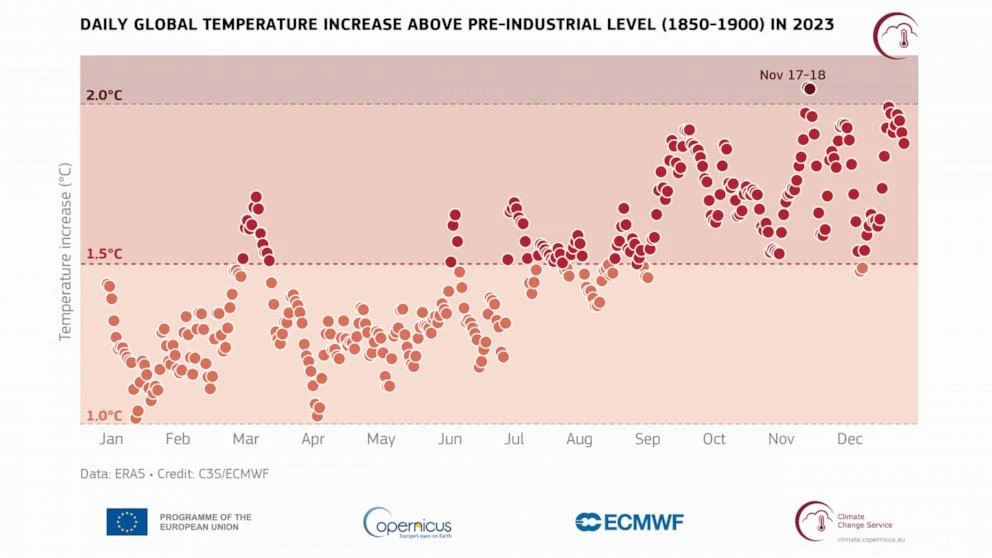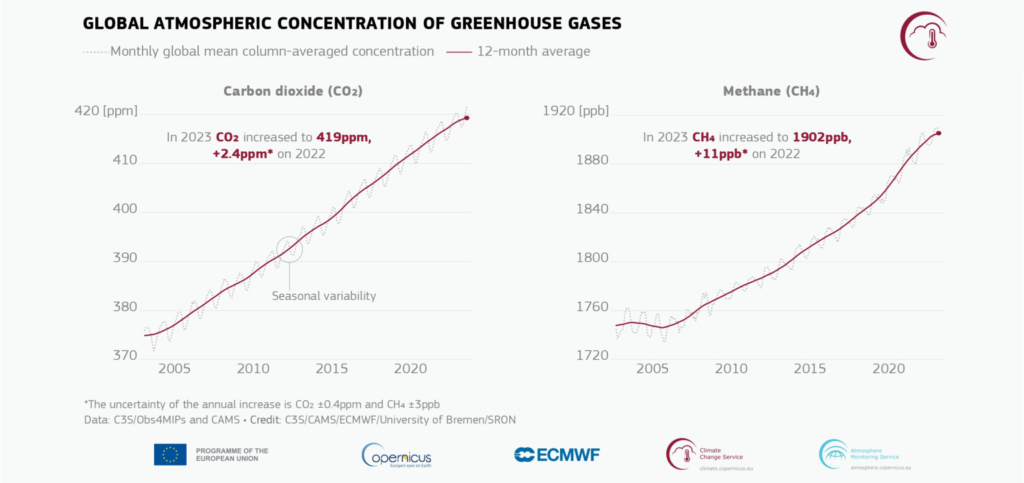The world was probably warmest in the last 100,000 years last year, making it the hottest year on record, according to the European Union’s Copernicus Climate Change Service (C3S) on Tuesday.Last year was 1.48C warmer than the long-term average before people began burning substantial amounts of fossil fuels.Since July, the worldwide air temperature has risen to a record high for the season almost every day.
According to Buontempo, the previous hottest year, 2016, broke the record by a “remarkable” margin, rising by 0.17 degrees over the previous year.

The natural El Niño weather pattern combined with human-caused climate change has confirmed 2023 as the warmest year on record. The globe is getting dangerously near to the 1.5 degree Celsius guard rail established by the 2015 Paris Agreement, with the average global temperature for 2023 being 1.48 degrees Celsius higher than the pre-industrial level.
What is El Niño?
A climatic pattern known as El Niño denotes the atypical warming of surface waters in the eastern tropical Pacific Ocean. The El Niño-Southern Oscillation (ENSO) is a bigger phenomena, of which El Niño is the “warm phase.” The phenomenon known as La Niña, or the “cool phase” of ENSO, denotes the atypical decrease in the surface waters of the area. El Niño and La Niña represent the oceanic component of ENSO, whereas the atmospheric fluctuations are attributed to the Southern Oscillation. By mid-year, global temperatures were breaking all previous records. Firstly, June was the warmest June on record for the world. July was the warmest July at that time. And so it did, right up until December.
The European Union climate monitor said on Tuesday that, on average, last year’s global temperatures were 1.48 degrees Celsius, or 2.66 Fahrenheit, higher than those of the second half of the 19th century.
The average daily temperature in 2023 was unsettlingly one degree Celsius higher than the pre-industrial level (1850–1900) for the first time, and on half of the days, it was more than 1.5 degrees higher. In November, there were two days with temperatures two degrees Celsius higher. The deputy head of the European Centre for Medium Range Weather Forecasting’s Copernicus Climate Change Service, Samantha Burgess, stated that “temperatures during 2023 likely exceed those of any period in at least the last 100,000 years.”
Record Carbon emissions in year 2023?
Governments and corporations continue to set increasingly ambitious climate targets, yet carbon dioxide (CO2) emissions are stubbornly high. In 2023, global CO2 emissions from the burning of gas, oil, and coal reached historic highs. According to C3S, last year saw the atmosphere’s CO2 content reach its highest point ever measured, 419 parts per million.

The planet’s increased heat in 2023 contributed to devastating heatwaves that spread from China to Europe, heavy rains that killed thousands of people in Libya due to flooding, and the deadliest wildfire season in Canadian history.
